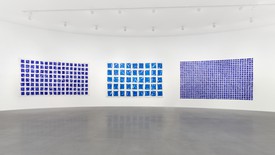Art Fair
Frieze New York 2021
Rachel Feinstein and Ewa Juszkiewicz
May 5–9, 2021, booth B7
The Shed, New York
frieze.com
Gagosian is pleased to announce its participation in Frieze New York at the Shed, the first in-person art fair of 2021 in the United States, with sculptures by Rachel Feinstein and paintings by Ewa Juszkiewicz.
Inspired by Baroque and Rococo sculpture, religious iconography, Romantic landscapes, and popular culture, Feinstein explores taste and desire, synthesizing elegance and kitsch. Having once visited the Nymphenburg Porcelain Manufactory in Munich, she later located an online image of Rococo sculptor Franz Anton Bustelli’s commedia dell’arte figurines, posed on unique shell-like pedestals. In response, she worked with the legendary factory to produce scaled-up majolica porcelain versions of the pedestals. In Feinstein’s works, viewers can imagine taking the place of the commedia dell’arte characters and trying on their removable porcelain shoes for size. The sensual abstract forms of Chinoiserie, Corine, and Mezzetino (all 2018), titled after Bustelli figurines, suggest the human form through its conscious omission. Built to the scale of Feinstein’s own body, they allude to the greatness of the Rococo era and the demise of European high craftsmanship.
Corine was included—along with Octavio, another sculpture from the same series—in Feinstein’s exhibition Secrets at Gagosian Beverly Hills in 2018; all four works were installed in Regent’s Park for Frieze London later the same year. Corine was also featured in Feinstein’s recent major survey exhibition, Maiden, Mother, Crone, at the Jewish Museum, New York.
Juszkiewicz’s meticulously precise oil portraits also draw on traditions of classical European painting—her sources date from the Renaissance through the nineteenth century—but with added touches of the surreal, the fantastical, and the grotesque. By obscuring her subjects’ faces—a strategy that recalls René Magritte’s painting Le fils de l’homme (The Son of Man) (1964)—she deconstructs conventional ideals of feminine beauty to evoke the suppression of female identity that permeates the Western canon. In five new paintings, Juszkiewicz “paraphrases” portraits by Johann Ender, Rembrandt Peale, Joseph Karl Stieler, and Elisabeth Louise Vigée Le Brun, rendering richly colored leaves and flowers—mixed with hair, wigs, and heavy fabrics—in startling detail. The resultant hybrid figures teeter between reserve and uninhibitedness, nature and culture, human and nonhuman. They relocate—as do Feinstein’s sculptures—the ghosts of women past firmly in the present.
To receive a pdf with detailed information on the works, please contact the gallery at inquire@gagosian.com.
#FriezeArtFair
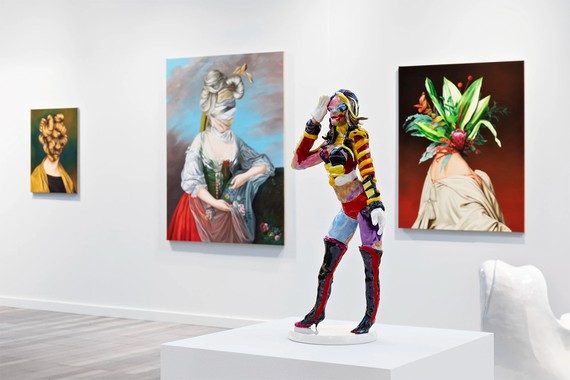
Gagosian’s booth at Frieze New York 2021. Artwork, front to back: © Rachel Feinstein, © Ewa Juszkiewicz. Photo: Dawn Blackman
Related News
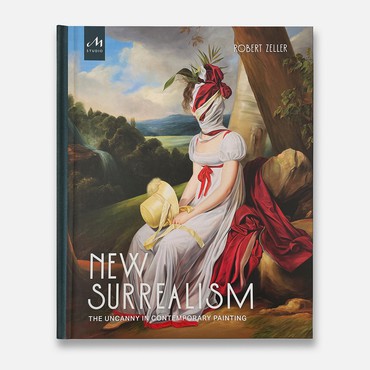
Talk and Book Signing
How Surrealism Became New Surrealism
Robert Zeller
Tuesday, December 12, 2023, 7pm
Gagosian, Beverly Hills
Join Gagosian and Phaidon for a talk by Robert Zeller inside Ewa Juszkiewicz’s exhibition In a Shady Valley, Near a Running Water at Gagosian, Beverly Hills, to celebrate the publication of New Surrealism: The Uncanny in Contemporary Painting, Zeller’s sweeping exposition of Surrealism and its legacy in contemporary art. Demonstrating the many ways in which the art movement that began in the early twentieth century continues to be relevant today, the book presents an international selection of contemporary artists whose works reveal Surrealism’s enduring influence, including Juszkiewicz, whose painting is featured on its cover. After the talk, Zeller will sign copies of the book, which will be available for purchase.
Robert Zeller, New Surrealism: The Uncanny in Contemporary Painting (London: Phaidon, 2023)
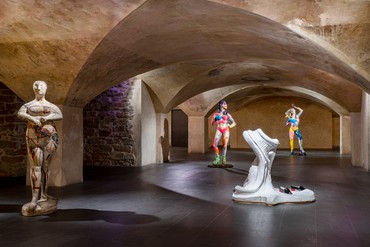
In Conversation
New Social Environment
Rachel Feinstein in Florence
Friday, September 8, 2023, 1pm edt
As part of the Brooklyn Rail’s online series New Social Environment, Rachel Feinstein joins the journal’s editor-at-large Andrew Woolbright for a conversation about the artist’s current exhibition, Rachel Feinstein in Florence, on view at the Museo Novecento and at three other museums in the city Museo Marino Marini, Museo Stefano Bardini, and Palazzo Medici Riccardi. In these daily lunchtime Zoom conversations, invited artists, writers, filmmakers, and poets discuss creative life in the context of our new social reality with Brooklyn Rail staff. The talk will conclude with a poetry reading by Rachel James.
Installation view, Rachel Feinstein in Florence, Museo Marino Marini, Florence, Italy, June 9–September 18, 2023. Artwork © Rachel Feinstein. Photo: Ela Bialkowska
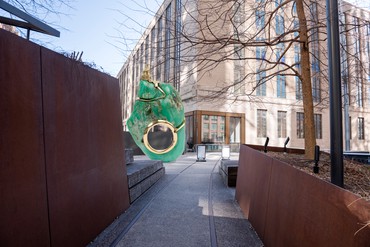
Honor
Rachel Feinstein
High Line Plinth
In 2023, Rachel Feinstein was invited to submit a proposal for the fifth and sixth High Line Plinth commissions, to be installed in 2026 and 2027 in New York. She was nominated alongside forty-eight other artists by an international advisory committee of artists, curators, and arts professionals convened by High Line Art. In March 2024, Feinstein’s Castle on the Rock proposal was one of twelve shortlisted by the committee. Maquettes of the shortlisted proposals are on view in the Coach Passage on the High Line at 30th Street from March 19 through June 2024, and the public is encouraged to share their feedback on the High Line website, which will be considered by the curatorial team during the selection process.
Rendering of Rachel Feinstein’s 17-foot sculpture Castle on the Rock for the High Line Plinth. Artwork © Rachel Feinstein
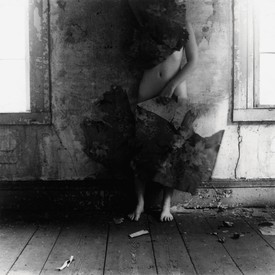
Francesca Woodman
Ahead of the first exhibition of Francesca Woodman’s photographs at Gagosian, director Putri Tan speaks with historian and curator Corey Keller about new insights into the artist’s work. The two unravel themes of the body, space, architecture, and ambiguity.
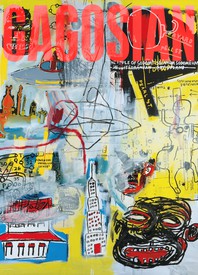
Now available
Gagosian Quarterly Spring 2024
The Spring 2024 issue of Gagosian Quarterly is now available with a fresh cover design featuring Jean-Michel Basquiat’s Lead Plate with Hole (1984).
Simon Hantaï: Azzurro
Join curator Anne Baldassari as she discusses the exhibition Simon Hantaï:Azzurro, Gagosian, Rome, and the significance of blue in the artist’s practice. The show forms part of a triptych with Gagosian’s two previous Hantaï exhibitions, LES NOIRS DU BLANC, LES BLANCS DU NOIR at Le Bourget in 2019–20, and Les blancs de la couleur, la couleur du blanc in New York, in 2022.
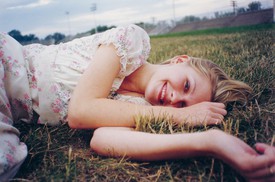
Sofia Coppola: Archive
MACK recently published Sofia Coppola: Archive 1999–2023, the first publication to chronicle Coppola’s entire body of work in cinema. Comprised of the filmmaker’s personal photographs, developmental materials, drafted and annotated scripts, collages, and unseen behind-the-scenes photography from all of her films, the monograph offers readers an intimate look into the process behind these films.
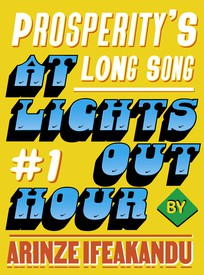
Prosperity’s Long Song #1: At Lights-Out Hour
We present the first installment of a four-part short story by Arinze Ifeakandu. Set at the Marian Boys’ Boarding School in Nigeria, “Prosperity’s Long Song” explores the country’s political upheavals through the lens of ancient mythologies and the mystical power of poetry.
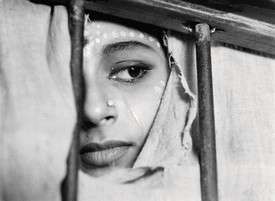
Mount Fuji in Satyajit Ray’s Woodblock Art, Part II
In the first installment of this two-part feature, published in our Winter 2023 edition, novelist and critic Amit Chaudhuri traced the global impacts of woodblock printing. Here, in the second installment, he focuses on the films of Satyajit Ray, demonstrating the enduring influence of the woodblock print on the formal composition of these works.
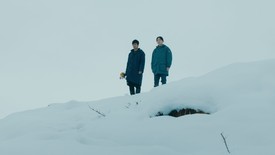
Adaptability
Adam Dalva looks at recent films born from short stories by the Japanese writer Haruki Murakami and asks, What makes a great adaptation? He considers how the beloved surrealist’s prose particularly lends itself to cinematic interpretation.
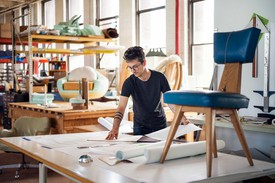
Vladimir Kagan’s First Collection: An Interview with Chris Eitel
Chris Eitel, Vladimir Kagan’s protégé and the current director of design and production at Vladimir Kagan Design Group, invited the Quarterly’s Wyatt Allgeier to the brand’s studio in New Jersey, where the two discussed the forthcoming release of the First Collection. The series, now available through holly hunt, reintroduces the first chair and table that Kagan ever designed—part of Eitel’s efforts to honor the furniture avant-gardist’s legacy while carrying the company into the future.
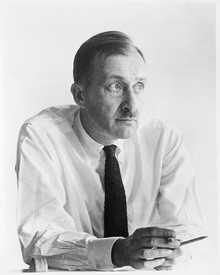
Game Changer: Alexey Brodovitch
Gerry Badger reflects on the persistent influence of the graphic designer and photographer Alexey Brodovitch, the subject of an upcoming exhibition at the Barnes Foundation, Philadelphia.
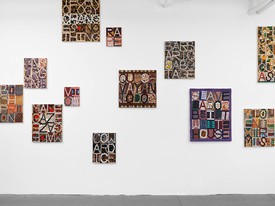
Outsider Artist
David Frankel considers the life and work of Jeff Perrone, an artist who rejected every standard of success, and reflects on what defines an existence devoted to art.
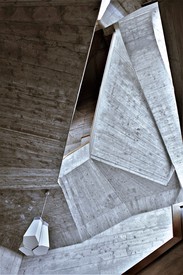
Goetheanum: Rudolf Steiner and Contemporary Art
Author and artist Ross Simonini reports on a recent trip to the world center of the anthroposophical movement, the Goetheanum in Switzerland, exploring the influence of the movement’s founder and building’s designer Rudolf Steiner on twentieth-century artists.
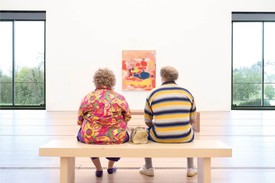
Duane Hanson: To Shock Ourselves
On the occasion of an exhibition at Fondation Beyeler, novelist Rachel Cusk considers the ethical and aesthetic arrangements that Duane Hanson’s sculpture initiates within the viewer.
